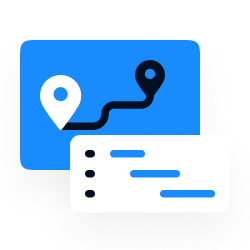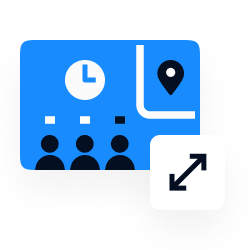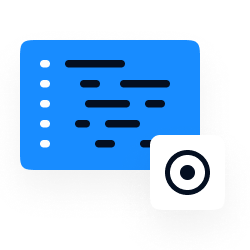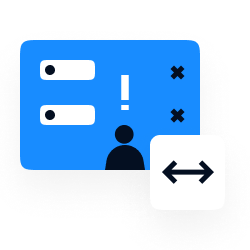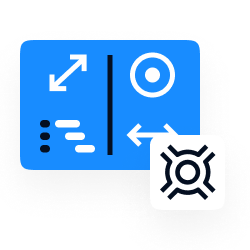The Ultimate Guide to Route Optimization in 2025

When your drivers have hundreds, if not thousands, of destinations or clients to visit, planning routes manually is a time-intensive and inefficient solution.
In many industries, driver wages and fuel costs alone make up 59.8% of the total operational cost per mile.
So even small improvements to your driver’s routes can not only help you deliver packages or serve your clients faster but can have a significant impact on your bottom line.
With proper route optimization tools, your business could save up to 20% in mileage and improve your order capacity by as much as 100% without increasing your fleet.
In this guide, we’ll give you a complete breakdown of what route optimization is and how it can benefit your business. We’ll examine real-world examples and provide use-cases for your industry.
We have a lot to cover, so let’s get started.
To skip to the information you’re interested in most, click the links below:
- What Is Route Optimization?
- Can’t I Optimize and Plan My Routes Manually?
- Real-World Examples of Route Optimization
- How Can Route Optimization Benefit Your Business?
- Route Optimization Use-Cases for Your Industry
- Route Optimization FAQ
What Is Route Optimization?
Route optimization is the process of improving routes for better efficiency and cost-effectiveness. Effective route optimization helps businesses maximize completed orders or deliveries while incorporating many criteria including driver schedules, available hours, total stops, fulfillment estimates, and legal requirements. Delivery routing isn’t just about finding the shortest path from point A to point B, it’s about finding the most efficient route for many different variables.
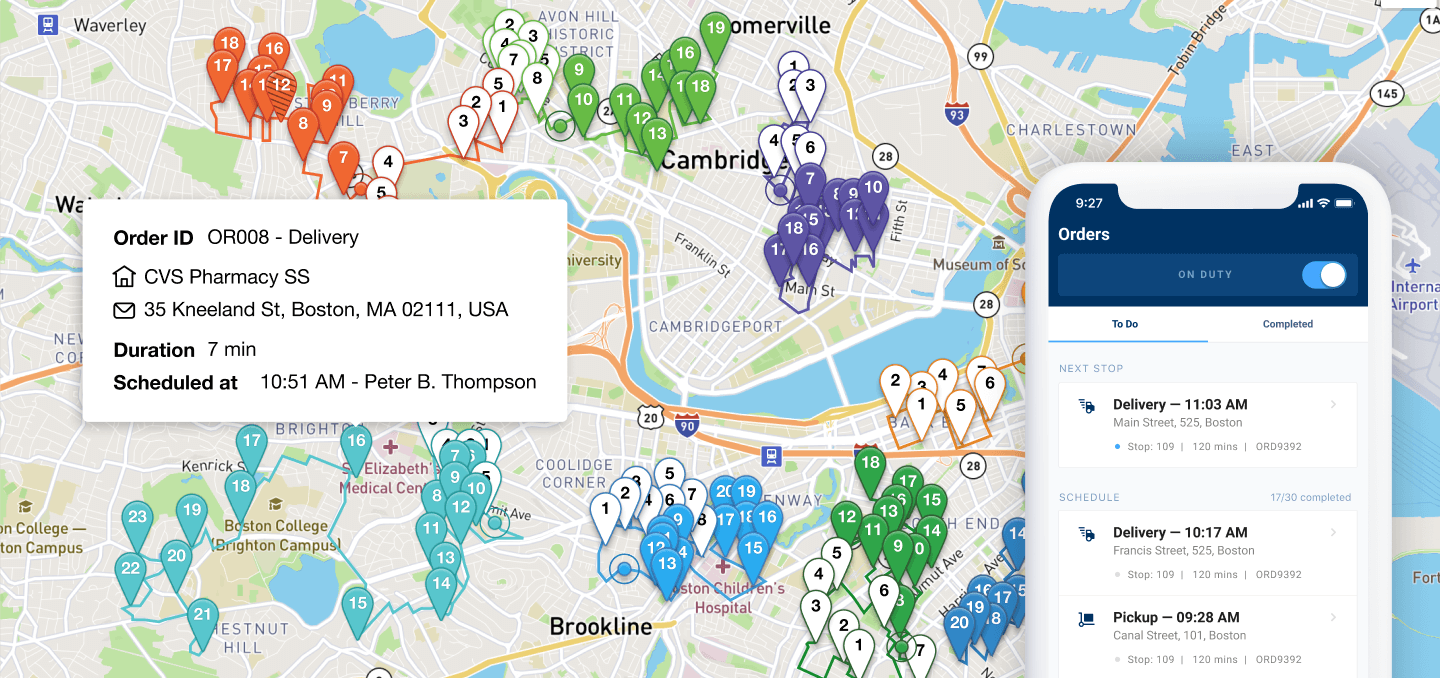
Route optimization is relevant to your company, whether you offer direct-to-consumer deliveries or are in a service industry where your technicians visit client homes or businesses.
Routing your drivers and technicians can be a costly and frustrating process, but with the right tool it can be automated — saving you time, money, and improving customer satisfaction.
Let’s get into it!
Can’t I Optimize and Plan My Routes Manually?
As your team, orders, and business grows, manual route optimization quickly becomes impossible.
There are multiple areas that get impacted when you do things by hand:
Efficiency: Are your drivers using the best possible scheduling and routing? Are you using too many vehicles/drivers to meet demand? Beyond a few drivers, manually solving these problems is almost impossible.
Scalability: It takes lots of hours and intimate knowledge of your business to manually plan routes based on requirements such as area, availability, certifications, and more. As a result, you need a large amount of dispatching and operational staff to manage even small fleets.
Accuracy: Are all the time windows, capacities, qualifications, and skill discrepancies considered? The more complex the schedule, the higher the chance for human error — even the best operational staff will make mistakes.
Flexibility: If a driver calls in sick, or you get last-minute orders, what do you do? At scale, a planning team needs hours to adjust — this can cause delays, failed deliveries, and unhappy customers.
Robustness: If your route planners, dispatch management staff, or operational assistants quit, how easy is it to replace them? When relying on spreadsheets and simple tools, they need a lot of local and institutional knowledge to complete the job.
I run a small business. Is route optimization only for big companies?
Absolutely not.
Route optimization isn’t just a concept reserved for enterprises and shipping empires. Modern route optimization is an excellent tool for small businesses as well.
By managing your fleet of drivers more effectively, you can lower your operational, fuel, and driver payroll costs significantly — and that’s something that SMBs and enterprises can both appreciate.
With modern route optimization software, your dispatchers or managers can also save hours of planning every day and focus on building their business/improving their customer experience.
For instance, local pool spa installation and maintenance company, Gallagher Pools and Spas, was able to plan their routes 100% faster with OptimoRoute. And the owner-operator didn’t have to spend all his time routing and planning his technicians. He was able to outsource those tasks to less-knowledgeable assistants and take some much-needed time off.
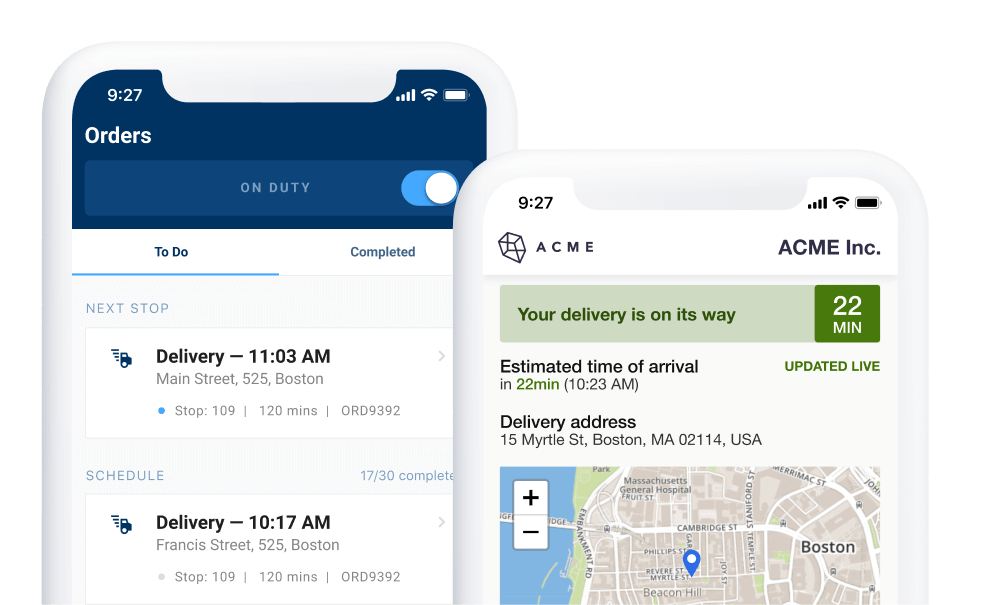
Reduce your operational costs by 30%
Increase delivery capacity by 43%
Plan 7x faster
Real-World Examples of Route Optimization in Action
But enough talk about theory. The easiest way to understand what difference efficient routing and planning can make for your company is to look at real-world examples of route optimization in action.
In this section, we’ll cover how two companies (one field-service business and one food delivery company), used OptimoRoute’s route optimization software to reduce planning time and mileage, improve their drivers’ capacity, uphold scheduled delivery and service times, and improve customer satisfaction
Field service route optimization example: Telgian
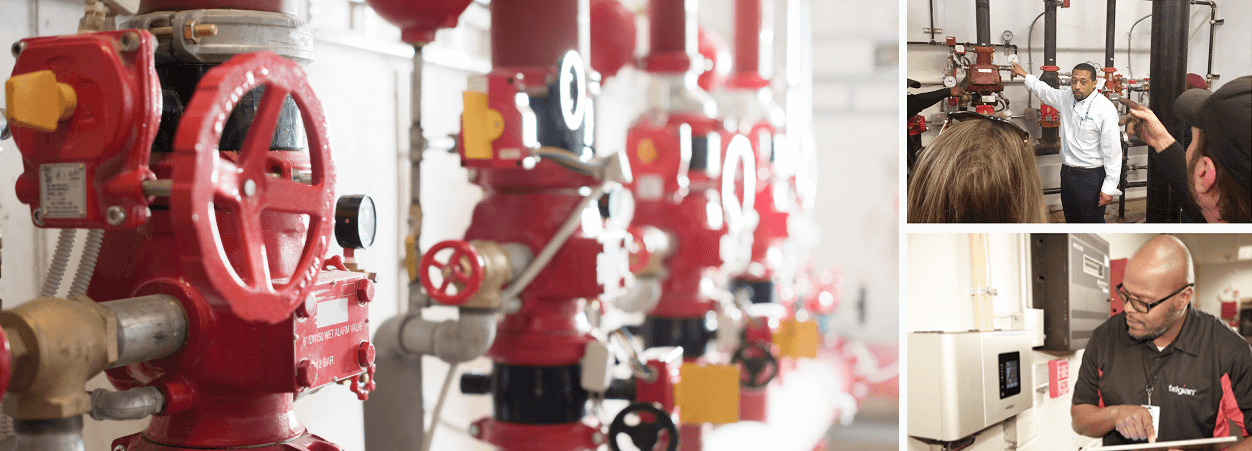
Routing isn’t just important for delivery businesses, it’s essential in the field-service industry as well.
Telgian is a worldwide provider of fire protection, safety, and security services. Their inspection division includes seventy field inspectors based in thirty-five states.
Because the company covers such a wide geographic area, its inspectors are often on the road for a full week at a time.
Planning routes and schedules used to be a manual process because of complex order constraints — things like unique state regulations and licensing requirements. On average, to plan a month of inspections took 3 people 13 days.
Sound familiar?
Telgian needed a routing solution. To further scale their business, they had to make their route planning a more efficient process.
They transformed their planning process with OptimoRoute:
- Planners can now easily import large volumes of orders (3000+ per month) using a CSV file.
- Much easier to set week-long plans including overnight routes (technicians cover large areas) with a different starting/end location every day.
- OptimoRoute automatically assigns orders to drivers based on territory, capacity, state regulations & licensing, and skill requirements for each order.
- OptimoRoute plans the optimal route and schedule for each technician to service their clients, considering customer-specific service windows, lunch breaks, traffic issues, and more.
- The OptimoRoute mobile app helps keep drivers en route and on schedule.
Telgian saw a number of benefits, including:
- Improved scalability — with automated planning, they can accommodate more business with less staff for both planning and actual inspections — achieved 19% YoY growth.
- A 256-hour reduction in monthly planning time, enabling them to reduce dispatch staff while increasing capacity by 70%.
- Telgian staff can now plan multi-day routes with different starting locations each day — a feature unique to OptimoRoute.
The results:

“It used to take three people more than two weeks to plan routes for the whole country. Now, we have 70% more orders per month, and just one person does all of our planning in about one week. We’ve gone from 312 man-hours of planning to 56 man-hours. It’s translated to annual savings of hundreds of thousands of dollars in salaries.”

Achieved 19% Yoy growth with OptimoRoute

Stable and predictable planning of overnight multi-day routes, accounting for all contraints

82% reduction in planning time: From 312 man-hours to 56 man-hours

66% reduction in planning manpower: From a team of 3 to a single person
By implementing route optimization, Telgian’s planning is now 82% more efficient and takes a single person only 8 days, instead of 13 days for a 3-man team.
This translates to a 66% reduction in operational staff, saving the company hundreds of thousands of dollars in salaries and benefits.
They’ve been able to take on 70% more orders with the same team, and increase revenue 19% YoY for three years running.
Food delivery route optimization example: Hardie’s Fresh Foods
Hardie’s Fresh Foods is a major food distributor in Texas with a fleet of 160 refrigerated trucks.
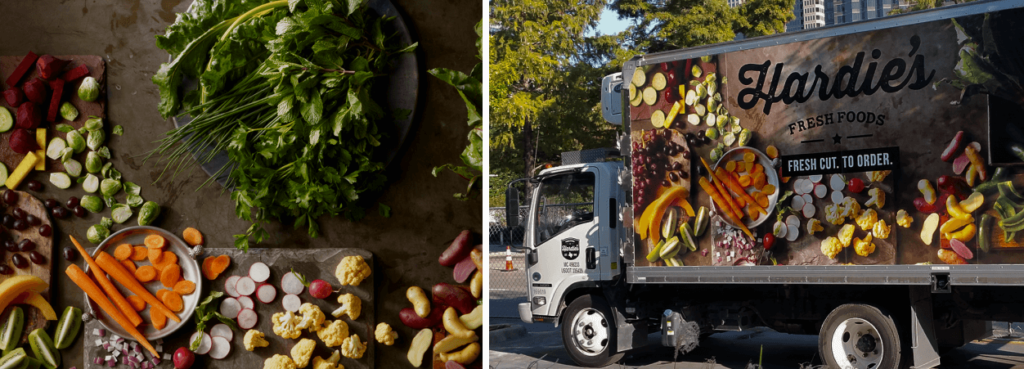
With low margins and heavy competition, they needed to improve their delivery routes to maintain a healthy profit margin and happy customers.
OptimoRoute helped transform Hardie’s planning process:
- OptimoRoute uses historical data to calculate order durations and automatically plans accurate schedules and routes.
- A unique OptimoRoute feature ensures strict time windows that factor in the time needed to unload the truck. (If the delivery is scheduled between 10 and 12, but it takes 20mins to unload, 11.40 is the latest possible time).
- It was easy to integrate OptimoRoute with the ERP (Produce Pro) via our robust API.
Hardie’s saw big benefits from the switch:
- Increased revenue and profit per driver/vehicle with a delivery capacity increase of 14% and driver cost reduction of 12%.
- Better scalability with 8x faster planning, and over 60% fewer working hours from dispatch staff.
- Significant increase in rate of on-time deliveries from 89% to 94% with 1.5% MoM improvement.
The results:

“[Route optimization resulted in] approximately two additional jobs per driver per day, or more than 330 extra deliveries per day. It’s exceptional.”

Mileage reduced by 20% and 8x faster planning

Capacity gains of 14% and driver-related costs down 12%

Better customer service: OTD from 89% to 94% and increasing 1.5% every month

Powerful modeling tool: To confidently commit to the service requirements of new customers
Hardie’s was able to reduce the total mileage of its delivery fleet while also cutting driver costs. The increase in efficiency allowed the company to serve 14% more orders, or 330 extra deliveries per day, with their existing fleet and workforce.
And to top it off, thanks to OptimoRoute’s smart tools and features, planning is now 8 times faster and requires 60% fewer working hours.
How Can Route Optimization Benefit Your Business?
No matter if you’re scheduling and routing for a mom-and-pop florist or a logistics company operating nationwide, the challenges you face are universal:
- Maximizing the orders and revenue from your existing fleet and workforce is hard.
- Manual scheduling and planning can take forever and is not scalable.
- Fuel and driver wages are a significant expense for your business.
- Adjusting to cancellations and sick employees on the fly is complicated.
- Delayed and missed deliveries lead to unhappy customers.
Delivery route optimization software can help. Here’s how:
#1. Increase revenue per driver and reduce costs

What business isn’t interested in reducing their operating costs and improving revenues per driver? For any business that does delivery routing or on-site service, low margins are a constant challenge. A key part of mobile workforce management is to ensure that you are operating as efficiently as possible and not wasting fuel or manpower.
When it comes to routing and scheduling, you have to answer a number of challenging questions to optimize your efficiency:
- What route will yield the best driver optimization and reduce overhead?
- Should you pay for overtime or bring in outsourced contractors?
By factoring in all costs, from hourly wages to mileage (and everything in between), route optimization can help you save without sacrificing the quality of service, or breaking regulations. It also helps you maximize your fleet, enabling each driver to complete more orders or service calls, increasing your revenue and profits.
For instance, when gas pipeline maintenance company Southern Star implemented route optimization through OptimoRoute, they doubled their productivity while simultaneously decreasing planning and dispatch efforts.
They’re now able to plan the work and travel for more than 250 technicians covering 5,800 miles of pipeline — with only eight people:

“We never purchased [OptimoRoute] to cut headcount. We just want to see if there’s a way for people to be able to fit in more work. There’s tons of work to be done and we have a better insight into how much time it’s taking them to complete so that we can get other tasks done – the ones that have been on the books, but we just didn’t get around to.”
#2. Scale your delivery team without extra dispatch/planning resources
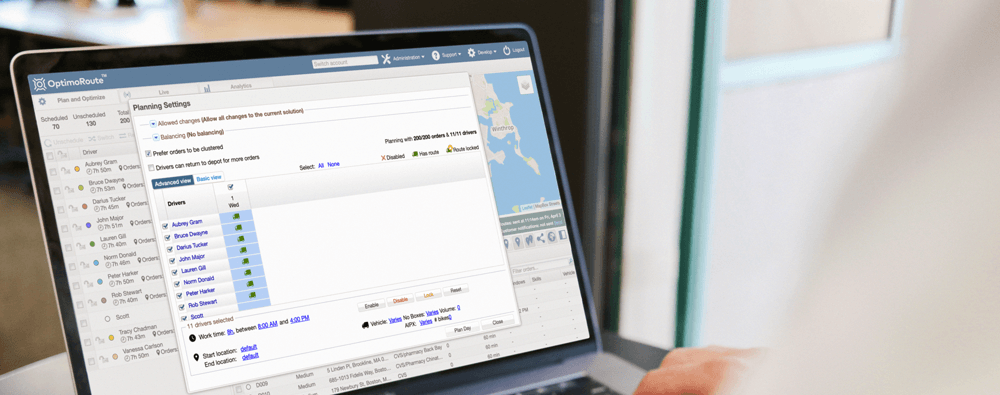
Your team spends hours organizing and reorganizing people, schedules, shifts, deliveries, appointments on a daily basis.
With route optimization tools, you can cut down the planning phase from hours to minutes. You can directly import order lists in CSV or excel formats into OptimoRoute, and automatically assign them to drivers based on availability and requirements.
Your business can create schedules up to 5 weeks in advance, resulting in better long-term planning. Sophisticated delivery route planning software like OptimoRoute allows you to plan months in advance.
Not only that, but it also factors in employee availability (holidays, PTO), lunch breaks, regulated driver breaks, customer availability (for example, only Tuesdays and Thursdays), deadlines, and more.
This might sound like a risk, as many things can change before the delivery or service date rolls by, but it’s not. With next-generation route optimization solutions also let you to instantly react to unexpected events like customer cancellations, vehicles down and immediately replan the whole schedule.
By planning for the long term, your business can see where you have room to grow and scale your operations, resulting in lower turnover and higher profit margins.
#3. Improves customer satisfaction

Your modern business is at risk: customer reviews affect your success or failure more than ever before.
90% of consumers used the internet to find a local business in 2019, and 82% read customer reviews before making a decision.
It’s not just e-commerce giants like Amazon that should care about reviews. They impact all kinds of consumer-facing businesses. If you want your potential customers to trust you with their money, you need to have a realistic and positive reputation online.
Real-time ETAs, tracking, and SMS messages and emails sent ahead of deliveries or service calls help you avoid delays, failed deliveries or rescheduled appointments.
And that improves customer satisfaction and brand loyalty.
With OptimoRoute, you can ensure your drivers arrive on-time more often and avoid failed deliveries. Keep your customers happy, and also cut down on unnecessary support contacts like the “are you guys here yet?” phone calls most service businesses get every day.
#4. Distributes workloads more effectively and improves employee retention

How are you currently distributing deliveries and service calls between your drivers? If you’re like most businesses, you set it up geographically, with each driver having their own delivery or service territory.
It’s a quick method, and it’s easy for even an inexperienced route manager or planner to do manually. After all, you’re just dividing up the workloads based on lines on a map.
But it’s not a perfect solution…
- Can you distribute work fairly without racking up extra cost in mileage and hours?
- What if different areas of the city or state have different amounts of scheduled deliveries or service calls?
- What if the drivers covering different areas have different vehicle capabilities, like refrigeration or storage size?
It’s easy to create imbalanced workloads where specific drivers handle a lot more deliveries than others and have to work overtime consistently. Or where your most expensive driver is paid to sit in their truck waiting around.
Optimized routing addresses all these questions by factoring them into the initial planning process. You can evenly spread orders across your entire fleet and ensure a good work-life balance for all your drivers.
That can make all the difference in employee retention, which is a challenge in many relevant industries. Only 64.9% of commercial drivers stayed on the job for their first 90 days in 2019.
And, with the current shortage of commercial drivers, you want to keep your good ones employed for as long as possible.
#5. Enables you to replan quickly
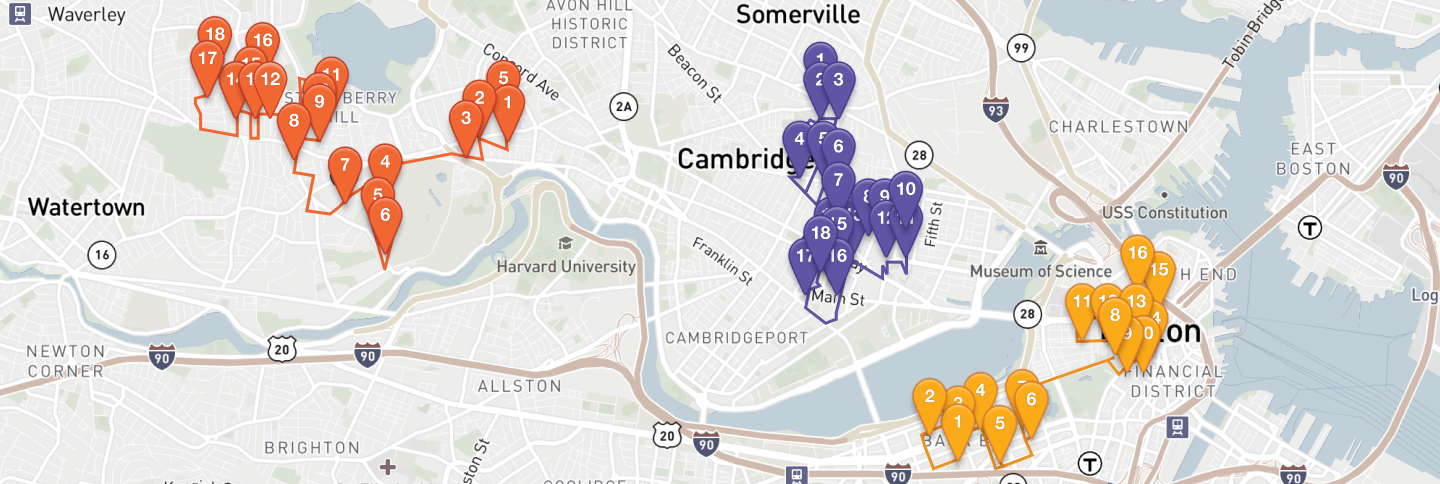
Last-minute changes to routes are inevitable, and it’s a momentous task to try to make edits across multiple driver schedules on-the-fly manually.
That is why dynamic planning — instant and automatic recalculation of routes to reflect real-world changes — is a necessity in 2021.
Late orders, cancellations, drivers calling in sick, or customers requesting alternative delivery addresses) are just a few factors that can ruin a well-planned schedule in a heartbeat.
When you do routing ahead of time, you must have the ability to replan and manage your fleet of drivers remotely on the fly.
When a driver calls in sick, or last-minute orders come in, OptimoRoute will calculate availability and assign the new jobs evenly across your fleet depending on their current location, capacity, and route, instead of overloading a few drivers.
For more on the benefits of route optimization, check out our comprehensive guide, “Why Use Route Optimization Software?”
Route Optimization Use-Cases for Your Industry
Let’s focus on the game-changing role that route optimization can play for your kind of business in particular. Whether you haven’t yet started a business and are shopping around for mobile business ideas, or are already operating a company, these are seven industries that can benefit greatly from route optimization and planning software.
Don’t see your industry below? That doesn’t mean route optimization can’t make your job easier. Reach out to the experts at OptimoRoute to get a personalized walkthrough for your business.
#1. Food delivery
For a food distribution or food delivery company, optimal routing is essential. It can help you cut operational costs and create a happier, more loyal customer base.
Primary industry-specific pain points
- Customers want to know where their order is at all times
- Constantly-changing capacities
- Last-minute changes
- Large order volumes
How route optimization addresses these pain points:
- Real-time order tracking and notifications.
- Can set individual capacities and truck capabilities at the truck/driver level.
- Dynamic replanning distributes last-minute orders or sick drivers’ shifts evenly across your fleet.
- Ability to plan routes for a large number of orders within seconds.
#2. Installation, inspection, and maintenance
Driving is also a considerable part of any on-site service business. Optimizing your routes can be a real game-changer.
Primary industry-specific pain points
- Different times/appointments
- Team waiting around
- Last-minute changes
- Different qualifications and expertise of staff
- Hard to plan for the long term
How route optimization addresses these pain points:
- Set time windows at the order level.
- Automatic workload balancing can help you reduce the number of technicians on call.
- Dynamic replanning helps you adjust to cancellations and last-minute orders.
- Advanced weekly planning adjusts for required breaks, locations, and client time windows.
#3. Logistics
When shipping cargo over long distances, choosing the right route can make all the difference.
Primary industry-specific pain points
- Large distances and long-haul routes
- Managing large fleets of different types of vehicles
- Overtime costs and employee turnover
How route optimization addresses these pain points:
- Weekly and long-haul planning, including overnight stops and regularly scheduled breaks to follow regulations.
- Stay in control with basic fleet management features like GPS-tracking, and create routes that consider vehicle type by importing orders via a CSV or Excel spreadsheet.
- Automatically spread workloads across your fleet, and ensure a better work-life balance.
#4. Retail & distribution
When you supply a product to your business partners, the timely delivery of the product is a huge part of the customer experience.
Primary industry-specific pain points
- Demanding customers expect real-time updates
- Last-mile delivery issues
How route optimization addresses these pain points:
- Real-time order tracking and notifications keep your customers up-to-speed.
- Efficiently deliver to multiple depots/distribution centers efficiently with order-based route planning.
#5. Field sales
Field sales reps that need to cover vast territories spend a lot of time on the road. Better routes can lower costs and improve results.
Primary industry-specific pain points
- Different meeting lengths
- Different account priority
- Last-minute changes
How route optimization addresses these pain points:
- Use historical data to assess meeting length when planning a route/schedule.
- Treat VIP accounts differently at the order level, assign them to experienced reps only, or have longer meeting times.
- Dynamic replanning keeps the schedule up-to-date at all times.
#6. Healthcare
In healthcare scheduling, arriving on time and spending as little time driving and as much time on the patient/appointment as possible is essential.
Primary industry-specific pain points
- Time-sensitive and “must-arrive” appointments
- Customers expect real-time updates
- Unique requirements for different patients
- Pick up and drop off: patients should spend minimal time in the car.
How route optimization addresses these pain points:
- Always be on time with accurate expected arrival times.
- Automatically send ETA notifications by email or SMS.
- Automatically match appointments with the right medical professional by setting certifications and experience.
- Easily plan the shortest possible routes from one patient location to another.
#7. Pest control
Pest control and integrated pest management have their own unique set of challenges when it comes to matching exterminators with clients. This can make pest control routing difficult if done manually.
Primary industry-specific pain points
- Different certification/equipment requirements
- Team waiting around
- Long-term planning issues: e.g. regular inspection visits or maintenance
How route optimization addresses these pain points:
- Set certifications and equipment at the technician level.
- With efficient route planning and remote handling capabilities, you can minimize technicians on-call while still handling all incoming cases
- Specify days of the week or date ranges for inspections and follow-up extermination, and plan up to 5 weeks in advance with one click..
Other industries
And the industries we covered above aren’t the only ones that can benefit from route optimization. Any company that provides field service or delivers products will see major benefits.
For example, route optimization is also valuable for these industries :
- Laundry and dry cleaning
- Waste collection
- Cleaning services
- Post & couriers
- Ecommerce
Route Optimization FAQ
As a major route optimization solution provider, we’ve heard all the questions about route optimization you could think of.
Below, we’ve compiled our answers to the most commonly-asked questions.
Can Google Maps optimize my route?
It’s possible to use Google Maps to optimize routes if you only have one or two deliveries, but beyond that Google Maps is a poor tool for route optimization because to truly optimize your routes you’d have to manually enter each possible variation of stops to see which one is shortest.
What is route management?
Route management is the process of planning and optimizing routes to get the most value out of your fleet of vehicles. This term is often used interchangeably with route planning & route optimization, and all of these have the goal of reducing mileage, gas usage, and driving hours, while delivering as fast and efficiently as possible.
How can I improve my last-mile delivery?
The key to improving last mile delivery is to use a route optimization tool like OptimoRoute to ensure routes are as fast and efficient as possible. OptimoRoute also lets customers set and change delivery windows while dynamically updating your driver’s delivery scheduling, as well as providing real-time order tracking and ETA notifications so customers know when to expect their items.
What is the best route planner?
OptimoRoute is a next-level route planner that not only identifies the quickest, most efficient routes for your drivers, but tracks their location and progress, and helps you manage them more efficiently. Our routing software helps to reduce route planning and scheduling efforts from hours or even days to minutes.
To learn more about how OptimoRoute can help your business, click here to book a personalized demo.
Final Thoughts
We hope this guide to route optimization has provided you with a better understanding of the role that improved delivery routes can play in your business’ growth.
The use of route optimization can help businesses like yours cut planning time by up to 80% and save significantly on fuel costs and driver wages.
You can also improve customer satisfaction with real-time notifications and more on-time deliveries. Improve employee retention with better workloads, and fair dynamic planning to avoid weighing down individual drivers.
Try OptimoRoute™ for Free
No installation or credit card required
